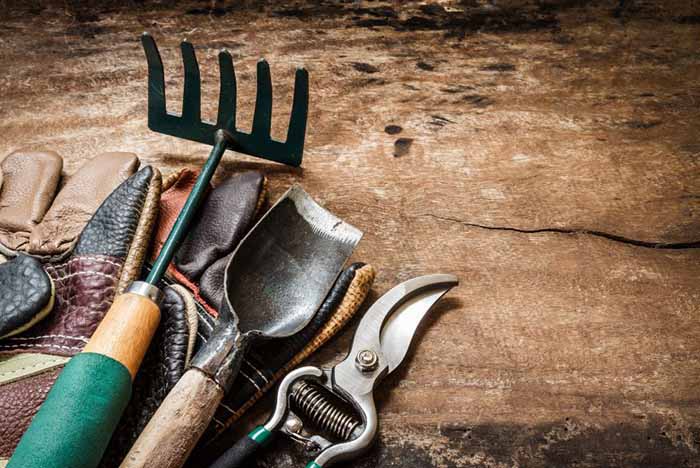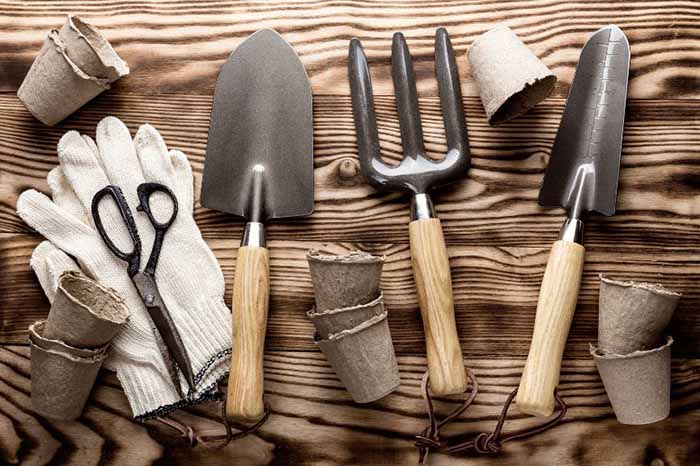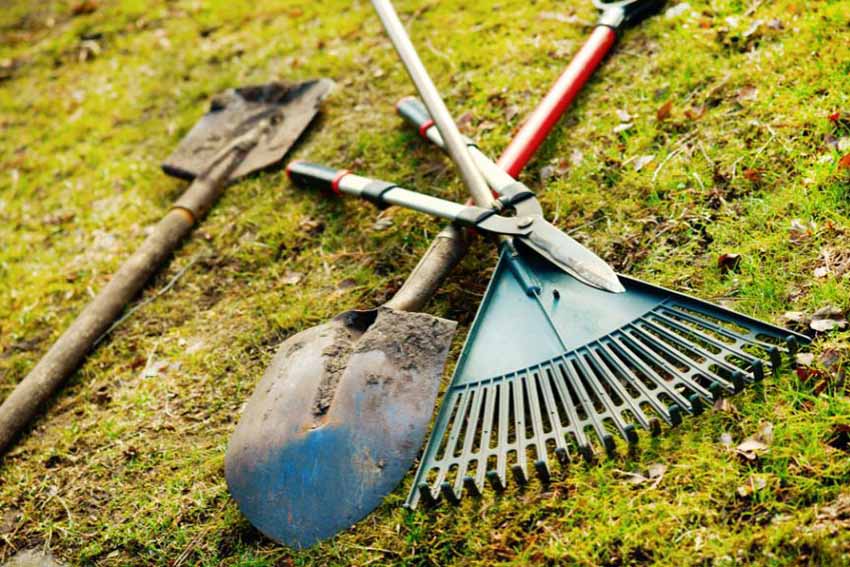When someone new enters the world of gardening with full fledge, there is one question that comes to their mind. And that question is, ‘What are the types of garden tools?’
Garden tools come in various types: Hand tools like spades and trowels, digging tools such as shovels and cutting tools like pruning shears. Moreover, watering tools include hoses, cultivating tools such as rakes, and power tools like lawnmowers and chainsaws.
Hope you are now in brief what are all the main types of garden tools available. But to know about their uses and other details, keep reading.
The Important Types of Garden Tools You Need To Know About
Gardening involves a variety of tasks, from soil preparation and planting to maintenance and harvesting. The right tools can make these tasks more efficient and enjoyable.
Here’s a little overview of the types of garden tools available, categorized by their primary functions-

Digging and Soil Preparation Tools
- Shovels and Spades: Shovels, with their round-point design, are perfect for digging and moving soil. While spades, with their flat, square edges, are ideal for edging garden beds, cutting through sod, and moving small amounts of soil.
- Garden Forks: These tools are excellent for breaking up and turning soil, especially in areas too tough for a spade. Forks with straight tines are better for digging in compacted, rocky, or clay soils. Whereas those with slightly curved tines are great for scooping mulch or turning compost.
- Cultivators: Hand cultivators or tillers are used to aerate the soil and remove weeds around plants. Their tines scratch the soil surface, promoting air and water penetration.
Planting Tools
- Trowels: A gardener’s best friend for planting, transplanting, and weeding. Trowels come in various shapes and sizes, with broader scoops for moving soil. And narrow ones for precise tasks like planting seeds or digging out weeds.
- Bulb Planters: These tools are designed to remove a core of soil to plant bulbs efficiently. They often have depth markings to ensure bulbs are planted at the correct depth.
Cutting and Pruning Tools
- Pruning Shears (Secateurs): Essential for cutting through branches and stems. Bypass pruners are ideal for live plants and green wood, while anvil pruners are better suited for dead wood.
- Loppers: Similar to pruners but with long handles for extra leverage. It is perfect for cutting thicker branches that are out of reach or require more force.
- Grass Shears: Designed for trimming grass and small plants around objects and borders where lawnmowers cannot reach.
Weeding and Maintenance Tools
- Garden Hoes: Useful for weeding and breaking up the soil surface. The type of hoe needed depends on the garden’s specific needs, with options ranging from flat hoes for chopping to stirrup hoes for a back-and-forth motion.
- Weeders/Grubbers: These tools have pointed tines for pulling out tough weeds by their roots without disturbing surrounding plants.
Watering Tools
- Watering Cans: These come in various sizes with different spout types to control water flow, allowing for gentle watering of plants without disturbing the soil.
- Hose and Sprinklers: Both are essential for watering larger gardens. Sprinklers can provide even water distribution, while hoses with various nozzles offer flexibility in water flow and reach.
Lawn Care and Landscaping Tools
- Rakes: Leaf rakes are used for gathering leaves and debris, while garden rakes have sturdy metal tines for breaking up soil and removing rocks.
- Edging Tools: These tools, including spades and specialized edgers, create clean lines around garden beds and walkways.
Power Tools
- Lawnmowers and Trimmers: For maintaining lawns and cutting grass in areas difficult to reach with a mower.
- Leaf Blowers: For clearing leaves and debris from lawns and hard surfaces.
- Pressure Washers: For cleaning outdoor surfaces, including patios, paths, and garden furniture.
Harvesting Tools
- Pruning Shears/Knives: Not only for pruning but also ideal for harvesting fruits, vegetables, and flowers. A sharp, durable pair ensures clean cuts that won’t damage the plants.
Storage and Maintenance
- Tool Organizers and Storage Solutions: Keeping tools organized and properly stored extends their life and keeps them in good working condition.
- Maintenance Tools: Regular cleaning, sharpening, and oiling of tools are necessary to maintain their effectiveness and longevity.
Specialized Tools and Accessories
- Wheelbarrows or Garden Carts: For transporting soil, compost, garden debris, and even heavy tools across the garden.
- Gardening Gloves: Protect hands from thorns, splinters, and soil, making gardening tasks safer and more comfortable.
What Are The Most Common Mistakes To Avoid When Choosing Garden Tools?
When choosing garden tools, it’s easy to fall into common pitfalls that can lead to
- Frustration
- wasted money
- and tools that don’t meet your gardening needs.
Here are the most common mistakes to avoid, based on insights from gardening experts-

1. Not Considering Your Specific Needs
One of the biggest mistakes is not tailoring your tool selection to your garden’s specific needs. For instance, a small hand trowel might be perfect for a flower bed but inadequate for a large vegetable garden.
2. Focusing Only on Price
While budget is an important consideration, focusing solely on the price tag can lead to purchasing tools that don’t meet your needs. Quality should be a key factor in your decision-making process. Higher-quality tools are generally more durable, perform better, and offer greater value over their lifespan.
3. Ignoring Ergonomics and Comfort
Tools should feel comfortable in your hands and match your strength and height. Ignoring ergonomics can lead to discomfort, fatigue, and even injury. Test how a tool feels before buying it. Look for features like cushioned grips and lightweight materials that can make gardening more enjoyable and less strenuous.
Understanding what are types of garden tools available is very essential for every gardener. Knowing about the types and each different tool makes the tool selection process very easy, quick, and smooth.
Here we have categorized 10 different garden tools and mentioned every tool available under them. Once you know about them, then find out your needs according to the requirements, and pick the ones you need.
